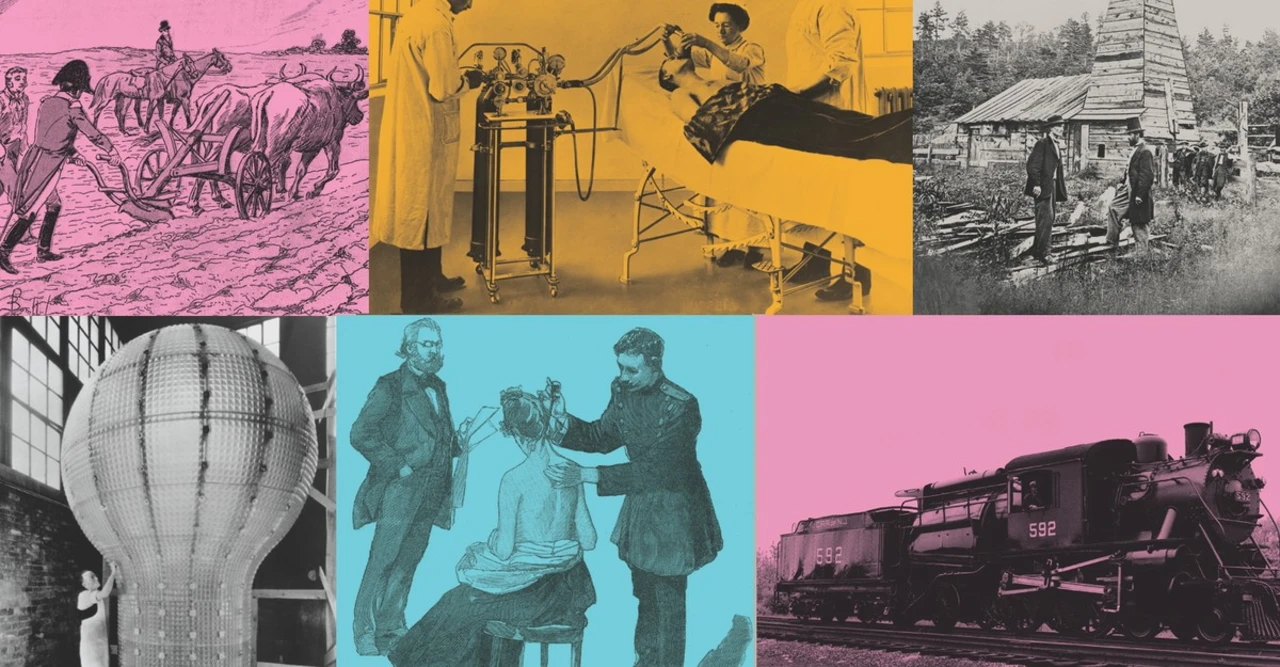Exploring the Technological Innovations of the Agricultural Revolution
The Agricultural Revolution of the 18th century was a period of immense technological advances in farming techniques, tools, and processes. This period of time had a profound effect on the production of food, which in turn had a tremendous effect on the cultural advances of the time. Here, we will explore the innovations and advances that were made during this period.
New Machines and Tools
The Agricultural Revolution saw the invention and implementation of machines and tools to help farmers produce more food with less effort. This included the invention of the seed drill, which allowed farmers to sow seed more accurately and quickly; the threshing machine, which separated the grain from the husk; and the horse-drawn hoe, which allowed farmers to cultivate the soil more easily. These machines and tools revolutionized the way farmers worked and greatly increased crop yields.
More Efficient Crops
The Agricultural Revolution also saw the introduction of new and more efficient crop varieties. This allowed farmers to produce higher yields with less effort. Crops such as potatoes, turnips, and maize were especially beneficial, as they provided a higher yield and were more resilient to weather and disease. This allowed more food to be produced, and thus more people could be fed.
Improved Animal Husbandry
Animal husbandry also saw great advances during this period. The introduction of selective breeding for livestock allowed farmers to produce higher-quality animals with improved traits, such as greater milk production, faster growth, and better resistance to disease. This allowed farmers to produce more food with less effort, further increasing crop yields.
Increased Trade and Exchange
The Agricultural Revolution also saw an increase in trade and exchange between different countries and regions. This allowed farmers to sell their surplus produce to other areas, providing them with a greater income. This in turn allowed them to purchase more efficient tools and machines, further increasing the productivity of their farms.
Cultural Impact
The advances made during the Agricultural Revolution had a profound effect on the culture of the time. It allowed for an increase in population, which in turn gave rise to an increase in trade and commerce, as well as an increase in educational opportunities. This led to a greater level of sophistication in art, music, literature, and science.
The Agricultural Revolution was a period of immense technological advances which had a great impact on the cultural advances of the time. With the invention of new machines and tools, the introduction of more efficient crops, improved animal husbandry, and increased trade and exchange, this period of time saw a tremendous increase in productivity and a great advancement in the culture of the time.
How the Agricultural Revolution Impacted Art and Music of the Time
The Agricultural Revolution marked a major turning point in human history, as it allowed for the development of the first settled societies. This allowed people to develop new methods of farming, along with new technologies and tools that would be used in their everyday lives. This had a large impact on the art and music of the time, as it gave people new ways to express themselves.
One of the most notable changes in art and music was the emergence of large-scale sculpture. Since people were able to settle down and stay in one place, they had more time to devote to creative pursuits. This resulted in the development of large-scale sculptures and other forms of art, which served to represent the gods, honor ancestors, and celebrate important events.
The Agricultural Revolution also led to the development of new instruments and musical styles. As people were able to settle down and stay in one place, they were able to experiment with different instruments and create new forms of music. This included instruments such as the flute, fiddle, and drum, as well as new forms of music such as folk and classical.
The Agricultural Revolution also had a large impact on the development of written language. With the development of the first settled societies, people had the opportunity to record their thoughts and ideas in writing. This allowed them to communicate their ideas to others, as well as preserve knowledge for future generations. This had a major impact on the development of literature, as authors were able to express their ideas in written form.
The Agricultural Revolution had a large impact on art and music of the time. It allowed people to settle down and stay in one place, which allowed them to experiment with new instruments and forms of music. It also allowed people to develop large-scale sculptures, as well as written language, which had a major impact on the development of literature. Overall, the Agricultural Revolution had a large and lasting impact on the art and music of the time, which we can still see the effects of today.
